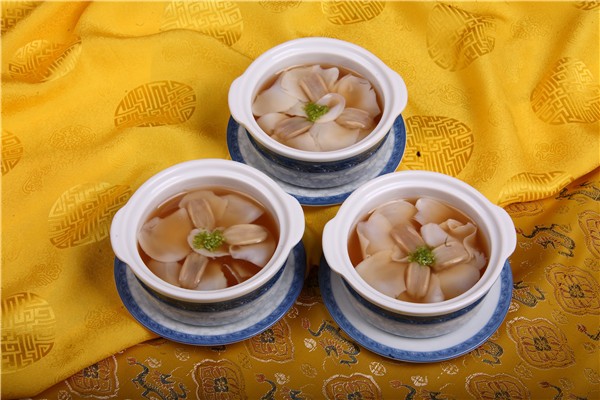It has been said that people eat with their eyes first.
Quanjude adds not only flavors but some artistic twists to its famed Peking roast duck by presenting it in a manner appearing like a peony.
The restaurant’s all-time popular duck dish is presented like a peony in full bloom in one dish that a diner may mistake for a wall decoration laid on the table at first glance. The dish, aptly called “peony duck,” is a Peking roast duck where the breast meat of the duck is ingeniously arranged in such a way that it resembles a peony. To complete the look, boiled edible tower-gourd seedlings were added to provide stalk and leaves for the “flower.”
In another dish, the duck tongues in a soup appear like a head of a peony floating on the surface of a pond. One dessert, on the other hand, is shaped and made to look exactly like a duck.
China Daily reported that these innovative creations are part of the 90 new dishes offered by Quanjude. Fifty of these dishes are fixed dishes that are served in all the restaurant’s branches. Forty of these dishes are branded as select dishes and are only available in some branches.
For more than a century now, Quanjude has created more than 400 duck-based dishes. The restaurant even offers what it calls as an “all-duck banquet.”
The peony duck was served for the first time during the Asia-Pacific Economic Cooperation (APEC) China 2014 hosted by Beijing in November. It was Asian presidents together with their respective delegates who had the first opportunity to have a taste of the Peking roast duck.
Quanjude now makes the peony duck available for the general public. Sun Zhongmin, director of the food innovation department of the restaurant, told China Daily that the Peking roast duck is served in all Beijing branches of Quanjude because “everyone deserves to have access to the new dish.”
Another new treat for diners at Quanjude is the restaurant’s new menu cards that now have 2-D bar codes. Curious diners who want to know the restaurant’s 10 most popular dishes, including information on their background and cooking preparation, can simply use their mobile phone to scan the codes.
Quanjude traces its roots in Beijing during the Qing Dynasty (1644–1912). It was established in 1864. The restaurant also has a branch in Kowloon in Hong Kong and in Melbourne, Australia.
Some things just get better with time.



























